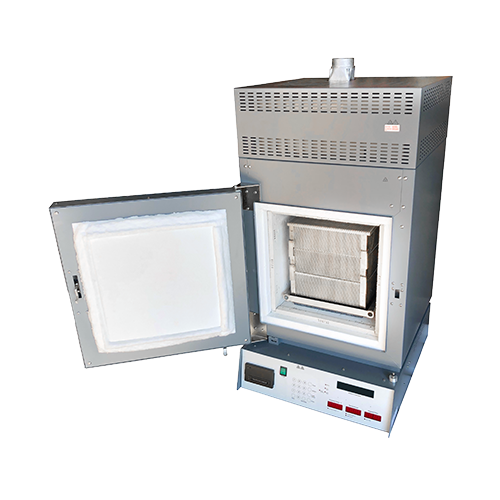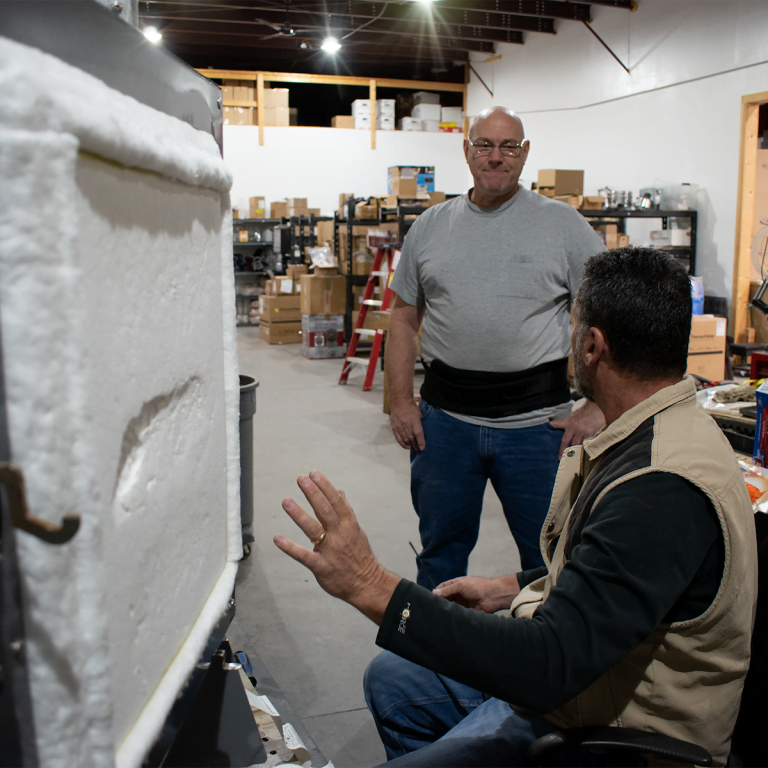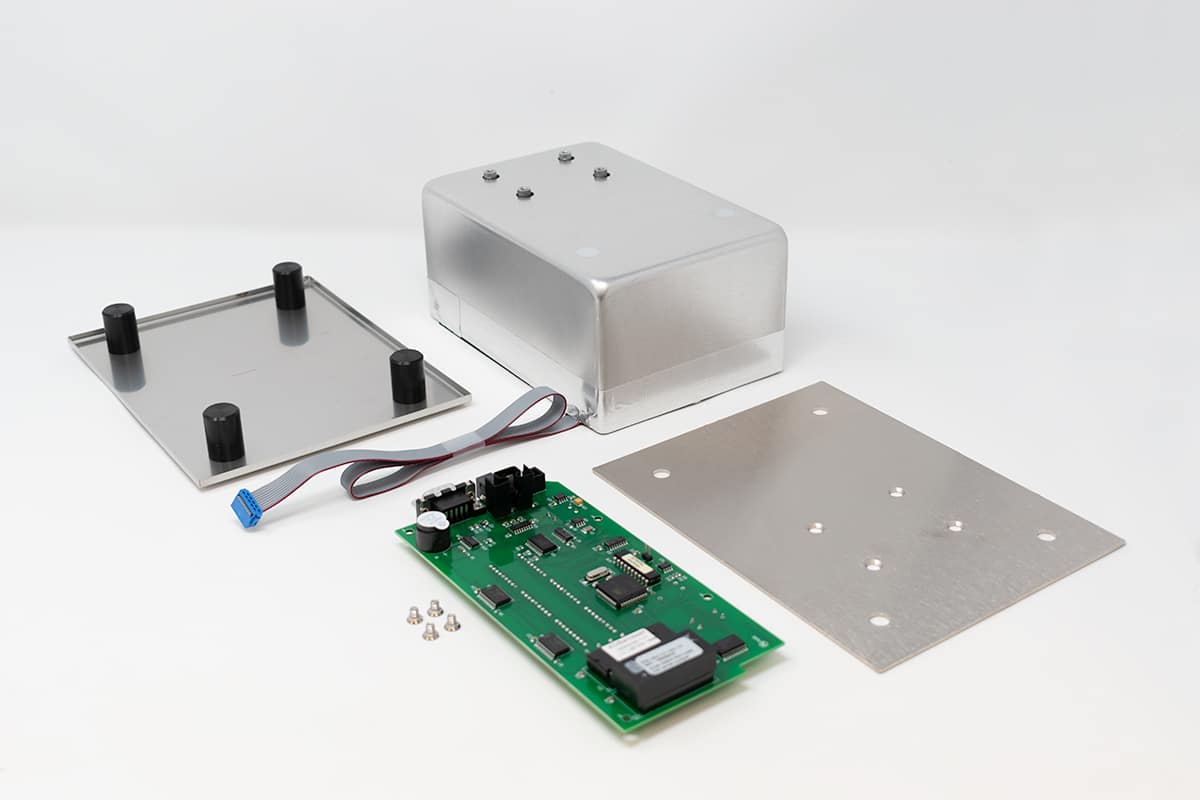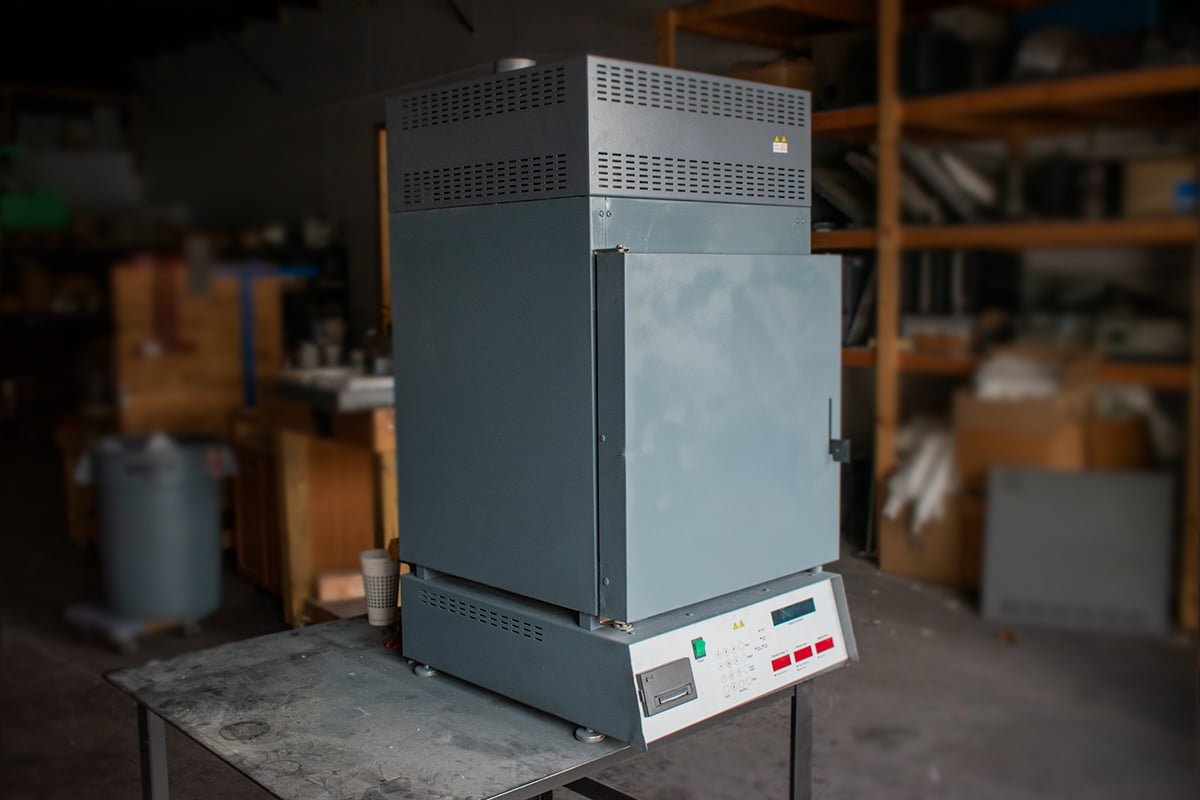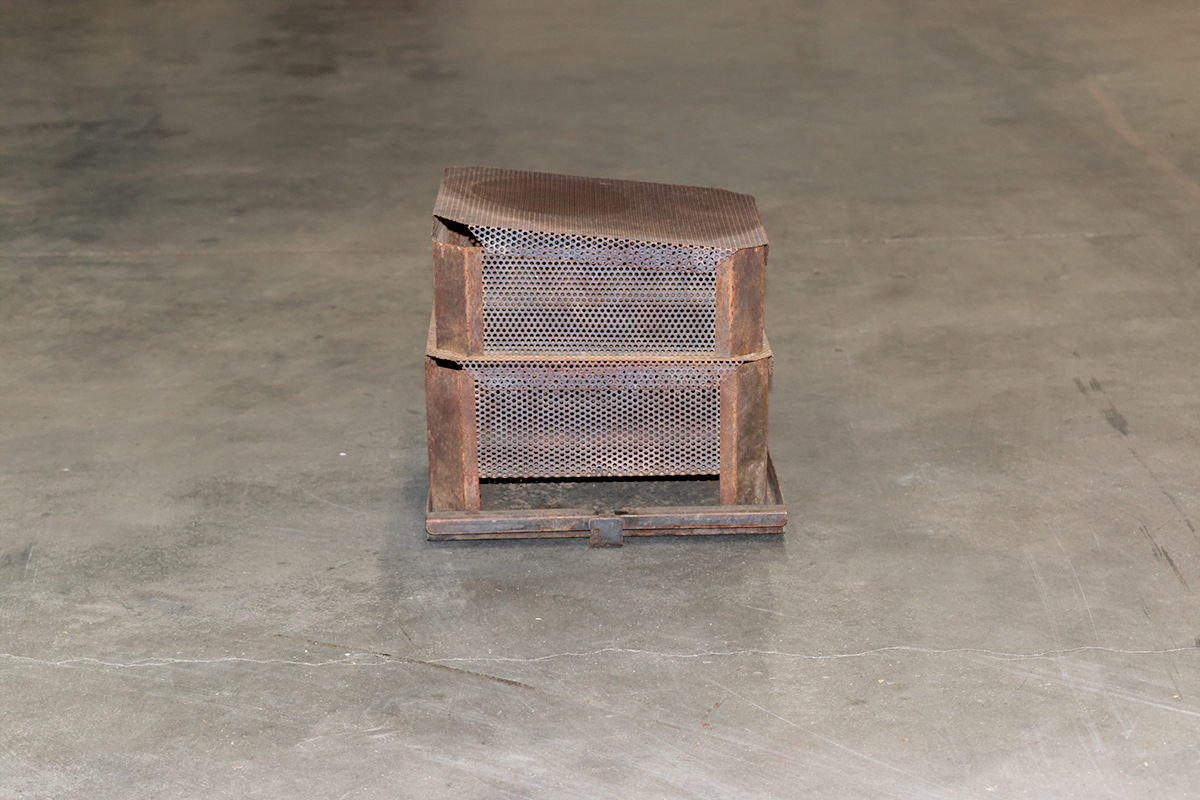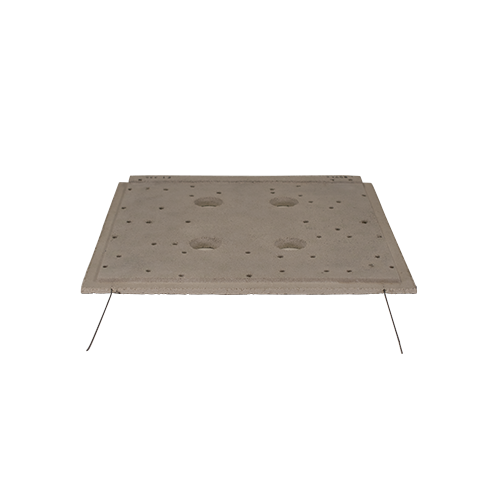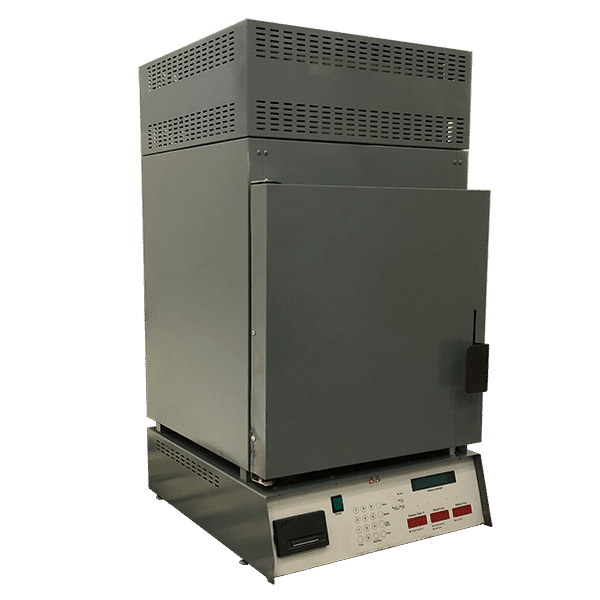The Mastery Series – Chapter 3: Maintaining Your NCAT Ignition Furnace
Table of Contents
In the previous chapter, we delved into the origins of the NCAT ignition furnace and the technology and theory that underpin its function. We also discussed the challenges faced during its design and the journey from concept to implementation.

In this chapter, we will attempt to build an ignition furnace together from scratch. We’ll be breaking down the three core systems of the unit: The heating system, the airflow system, and the exhaust system to understand how they work.
By the end of the chapter, you’ll be able to take what we learn in this chapter and put it to practical use with your own furnace. Let’s get to work!
The Heating System
The ignition method is not just some clever branding. It literally implies that the binder is burnt off of the aggregate by igniting it. The best way to do that is by creating fire.
To make fire you need 3 things: heat, fuel, and oxygen. Oxygen exists in the air so we have that one down. Fuel is also pretty easy to come by as that’s the thing we’re burning off (binder). So as it stands, we only need to provide one thing to help this process happen, heat.

Heating Elements
In an NCAT, the heat is produced by heating elements. Heating elements work by taking a strong electrical current and funneling it through a special type of wire. When you do that the electrical current encounters resistance and that resistance produces heat as a byproduct.
That’s perfect, we need the heat, but an exposed wire with electricity flowing through it might cause some problems.
We need to find a way to keep the electricity from shocking technicians while still making sure that the chamber gets heated. Luckily the solution not only exists but is readily available. Enter ceramic.
Ceramic is great because it protects us from shocks, and allows the heat energy to pass through to the chamber. All we have to do is lay out the electrical wire into a ceramic mold and we have just created a heating element.
There are 4-5 heating elements depending on your furnace but in this chapter we will be focusing on newer series NCAT’s.
There are four heating elements in the chamber where you put your basket, and one additional element above the chamber. Inside of the chamber the left and right heating elements are your powerhouse elements. They provide a majority of the chamber’s heat. The bottom and top elements heat as well but they don’t produce nearly as much.
There is also one afterburner heating element above the chamber whose sole duty is to heat the byproducts from ignition and help break down large bits of ash and debris.
Great, we now have a way to generate heat. We can place them inside of our furnace and ignition will happen. The only problem is that we have no way of knowing if the temperature gets too hot. Enter the thermocouples.

Thermocouples
Thermocouples are two different types of metal that are welded together at a tip. When a temperature is applied at the tip there is a small amount of voltage that gets transferred through the different metals.
The voltage is measured at a reference junction (or in our case, from the circuit board of our NCAT) and is compared to the voltage that we get from the welded tip. That difference in voltage can be calculated into a temperature.
There are two different thermocouples in the furnace, one to detect the temperature in the chamber, and the other to detect the temperature of the afterburner heating element.
The filter thermocouple sits near the filter element and can tell us if the temperature is hot enough to scrub the air. This is important to know because if it’s not producing enough heat, your NCAT’s exhaust can become clogged and it might not be able to do a complete burn.
The Chamber thermocouple sits in the… chamber, but I’m sure you already guessed that. The chamber thermocouple is important because not only does it tell us what temperature the chamber is at, it also lets us know when your sample begins to ignite. It’s a good diagnostic tool because it can show us where the unit is failing.
Signs That a Heating System Component Has Failed
Long Burn Times
If an element is out, then your chamber isn’t producing enough heat. You might not notice it if your ignition furnace has been on for a while but as soon as you put in a sample the chamber temperature will drop and will take a long time to recover. This causes a longer time before ignition can begin and an even longer time on the back end.
Incomplete Burns
If the furnace can’t keep up with ignition after the initial flare up, it won’t be able to continue the process. This can mean that ignition stops too early and there is still unburnt binder in your sample. If you read our last chapter then you know how pockets of unburnt material can still exist in a sample.
Error Codes
The NCAT comes pre-equipped with codes to tell us if something is wrong with our heating system. Sometimes the codes tell you exactly what’s wrong with the furnace, but most of the time the error codes don’t accurately depict what is actually wrong. Take these error codes with a grain of salt.
E001
This error code indicates that the thermocouple isn’t sending a voltage signal back to the NCAT from the chamber. If the thermocouple breaks, the furnace has no way of knowing what the chamber temperature is. This error will stop the NCAT from functioning.
We have seen damage to the end of the thermocouple from “over excited” technicians who shove the basket in too far.
E002
This error code indicates that the thermocouple isn’t sending a voltage signal back to the NCAT from the filter. This could mean that the thermocouple is broken at some point.
This thermocouple can get damaged when you are vacuuming out your unit’s coarse ceramic filter or during a filter element installation.
E003
This occurs when the temperature in the chamber has exceeded its safety threshold (675°C by default). This is an idle only error code which means that it will only trigger if the start button isn’t pressed.
This one can get triggered by putting in a sample and forgetting to hit the start button.
E004
This error code occurs when the afterburner temperature has exceeded its safety threshold (975°C by default). This is an idle only error code which means that it will only trigger if the start button isn’t pressed.
E005
This error code is actually tied to the door Interlock switch not working. While the door doesn’t produce heat it is designed to keep the heat inside of your unit and not in your lab.
E010
This error code occurs when the chamber thermocouple is installed backwards. The voltage reader is only configured to read the flow of electricity in one direction. This most often occurs during installation but can also be triggered by a bad circuit board.
E011
This error code occurs when the filter thermocouple is installed backwards. The voltage reader is only configured to read in one direction. Again, this occurs mostly during installation but can also indicate a bad electrical component.
Furnace Airflow
Ok so we have a system that heats and tells us what the temperature is. But if we build an ignition furnace based only off of these systems we will find that burns take hours to complete. Why is this?
Air is made up of roughly 21% oxygen. As our sample catches fire, it uses that oxygen, heat, and the binder to cause ignition. Ignition isn’t a one time deal though, it’s more of a chain reaction. A bit of binder ignites which increases the temperature in its immediate area, which makes it more likely for the binder next to it to ignite.
That fire creates a small pressure variant that brings in some fresh air and helps push out the “burnt” air. This will eventually get the job done and your sample will burn, but the variant is so low that the reaction takes a long time to complete.We have a few options to fix this.
We could make more holes in our furnace to allow more air in. That would increase the fresh air and create a stronger burn, but this would also mean that we would need to reduce the size of our heating elements so heating it up could take longer.
Or we could force air to flow through our chamber through a blower motor. This would mean we wouldn’t have to reduce the size of the heating elements and since new air is forced in we could increase the pressure differential making heating and exhaust much more efficient.
This second way is better for overall performance which is why the NCAT follows this design.

Airflow Components
The Blower Motor
The blower motor is technically part of your exhaust system but it is also responsible for most of your furnaces airflow too. The blower motor is designed to blow air out of the unit after it has been scrubbed by the filter element. By expelling exhaust the blower also helps to bring new fresh air into the chamber creating ideal conditions for ignition.

Coarse Ceramic Filter
The coarse ceramic filters play an important role in your furnaces air flow although it’s not as direct. The coarse ceramic filter works to scrub the air by trapping large ash particles and smoke inside of its pores. It does this by getting really hot (thanks to the afterburner heating element) which decomposes ash into various elements and reburns smoke particles that pass through.
It might not seem like much but those ash and smoke particles can build up over time potentially blocking all airflow.
Signs You Have Poor Airflow
Long Burn Times
Poor airflow destroys burn performance by not introducing enough oxygen to your fire. This lowers the chance and amount of those chain reactions and extends the time it takes for a complete burn.
Incomplete Burns
Poor airflow also doesn’t allow as much oxygen to flow through the center of your sample during a burn either. This can result in pockets of binder that stay cooler and end up not igniting
Smoke Coming Out Of Your Ignition Furnace
If you have a smokey lab during burns then airflow is most likely the culprit (There are other cases which I discuss later in this article). As ignition happens the furnace airflow pattern makes the smokey air filter through to the exhaust. When this doesn’t happen the smoke has to go somewhere and your lab is the next best place. This is an extreme event and is often very dangerous. If this happens DO NOT OPEN THE DOOR. Instead turn the power off and only use a fire extinguisher if there is open flame coming out of your unit. Once it cools down, reach out to us, and we’ll go over the next steps.
Tips To Fix Airflow Problems
Cleaning out your coarse ceramic filter and vacuuming the top of your furnace out are the best ways to ensure proper airflow through your unit. We wrote an article on how to do this properly which you can check out here. When you get down to your filter take extra special care that you don’t break them. After the first burn the coarse ceramic filter becomes incredibly fragile.
The Exhaust System
Alright so now we have a way to heat up our sample, we have a way of detecting temperature, and we have a way to make our burns more efficient. We’re ready to start burning right? Well not exactly.
What happens to everything after it gets through the filter? That’s where the next system, the exhaust, really shines. Our filter does decompose most of the larger particles, but without a good enough exhaust to carry all of that sediment away from the furnace then naturally our NCAT ignition furnace would only be good for a few burns before becoming clogged.
The Blower Motor
The blower motor does double duty on our design because it also propels the burnt up debris away from the furnace. It works by having a motor connected to bearings that turn a large fan wheel.
The fan wheel is made up of small curved pieces of metal that as they spin create a pressure differential. There is an opening on the fanwheel that allows fresh ambient air to mix with the exhaust.
This helps to cool down the existing air to a much more manageable temperature. The cooled air is then funneled out of the furnace through an exhaust port at the top. This is where it meets the next component.
Exhaust Pipes
I know, you would think they aren’t very important or complicated, but then again 30% of the NCAT’s that we visit for repair are usually fixed by adjusting the piping.
The piping system helps to carry the cooled air and remaining debris out of the furnace and also keeps it out of your lab. There are two acceptable piping configurations that are recommended by us. The first is a straight pipe and the second is a 90 degree bend.
Straight Piping
This is ideal when you don’t have really tall ceilings or your NCAT isnt near an external wall (This is a lot more common than you would think). You typically have 7 to 8 feet of good exhaust length (or up to 10 feet if you’re rocking a 240v unit) with a straight pipe.
The pipe runs vertically from the exhaust port out through the roof. Where the pipe meets the roof you will want to have a really really good seal. If you don’t water can run down the sides of the piping and wreak havoc on your furnace. After a long enough time, your furnace will stop working.
You will also want to have a cap put on the piping and we would recommend a cap that prevents wildlife from entering your unit too. Believe it or not, dead animals in the exhaust are a very common occurrence and can stop airflow altogether.

The 90 Degree Bend
When you can’t install straight piping then the 90 might be your only solution. Bear in mind that you can really only have one bend in your pipe before you restrict airflow too much.
You also need to make the bend as far away from the exhaust port as possible in order to not create a positive pressure environment. If the bend is too low you can end up stalling the air and creating a vortex that doesn’t allow exhaust to escape.
This can cause your furnace to heat up and cause catastrophic damage to the entire exhaust system.
The Ignition Furnace
There we have it, we have built the main components of an NCAT ignition furnace. We discussed how important heat is to ignition, we covered how airflow through the system matters, and we talked about why good exhaust makes the furnace burn safely. Now as an added bonus I am going to include some interesting tidbits that you might not know about.
208v Furnaces
You might be surprised to find out that the only difference between the 240v and the 208v ignition furnaces are the heating elements. Everything else is exactly the same. This includes the blower motor which is actually designed for 240v.
This means that your blower is only running at 80% efficiency. Which means that your blower isn’t pushing out as much exhaust, and is also the reason why we replace blower motors a lot more frequently on 208v furnaces. We wrote another article on this which covers how to convert your unit into a 240v
Blower Motors
Blower Motor oil is your best friend. An oiled blower can last 2-3 times longer than a non oiled one. Don’t believe us? Try it for yourself and see.
Metal Hearth Plate
We developed a new hearth plate made of stainless steel that reflects energy back into the chamber. It has gone through extensive side by side comparison burns and produces the same results as a ceramic hearth plate. It also can’t be broken by clumsy techs. You can get yours here.

